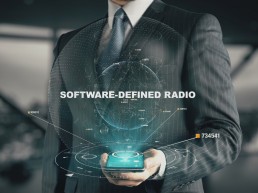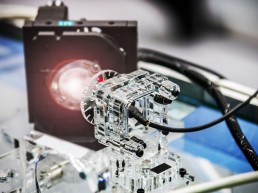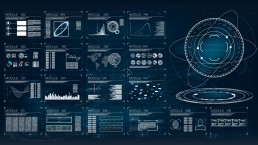Core competences Antwerp Space
In the course of over 50 years in space, Antwerp Space built up a very profound knowledge in many technical areas. Areas in which Antwerp Space engineers are considered technical authorities. These core competences, continually maintained through significant investment, serve as the basis for the five application domains, Communication, Navigation, RF-Interference and Compact-Radar, in which Antwerp Space is an active market player.
Antwerp Space’s core competences can be summarized as follows:

High Frequency Design
Antwerp Space has a long-standing design expertise of electronic equipment and systems in the S, X, K and Ka frequency bands.
Antwerp Space’s RF Experts designed several high quality and high performance communication subsystems for long-duration deep space exploration missions. These support communication with Earth over extensive distances, under extreme conditions of temperature and cosmic radiation.
A diversity of equipment such as transmitters, receivers, RF front ends, local oscillators, solid state power amplifiers has been delivered in the past to Large System Integrators and space agencies.
For the New Space industry ground-breaking inter-satellite link solutions have been developed and included into Antwerp Space’s product portfolio.
A fully equipped RF-lab for frequencies up to 50GHz is at our customers’ disposal.

Digital Signal Processing
Antwerp Space anticipated the growing number of space-oriented applications requesting increasing data rates by investing in the field of Digital Signal Processing (DSP) technology. The benefits of DSP such as flexibility, accuracy, repeatability, size, reliability and cost are aligned with the requirements of all New Space missions. Antwerp Space provides its customers bandwidth-efficient implementations by offering them advanced DSP onboard solutions. Examples are GMSK, Advanced Modulation & Coding involving higher-order modulation, LDPC and Turbo-codes.

Software Defined Radio
Software Defined Radio (SDR) is a flexible technology which enables the design of adaptive communications systems by using software or FPGA implementations for functions traditionally implemented in hardware. The flexibility of this technology allows to configure spacecraft very late in their production cycle, up to just before launch, or even in orbit. This key technology reduces the time to orbit of new innovative features by upgrading systems already in orbit.
Similar software-defined platforms are used for RF-Interference detection and mitigation, navigation (Software Defined GNSS), secure communications (Software Defined Crypto) and compact-radar (Software Defined Radar). A fully qualified Software Defined Radio platform is available at Antwerp Space for rapid adaptation to any customer requirement.

Photonics
Microwave photonics is a very promising disruptive technology that overcomes the technology limitations of traditional RF by providing much wider bandwidth (up to 100 GHz), lower mass, smaller volume, and a significantly higher power efficiency. Antwerp Space is on the cutting edge of photonic technology.
Our Photonic portfolio are based on different Photonic Integrated Circuit technologies and includes
- Frequency Generators and Converters,
- Switch Matrices for High Throughput Satellites
- Beamforming Networks for communication and RADAR payloads
- Lantern Receivers for Laser Communication Terminals
Currently research targets additional building blocks for Communication Payloads.
Antwerp Space is an active member of EPIC (European Photonics Industry Consortium) to stay in contact with the newest developments on this technology and interact with the European fabs and packaging companies.
A fully equipped Photonics lab serves our customers’ needs.

General technical space competences
All other more general technical competences that are required to bring a system to orbit are also available at Antwerp Space: Requirements management, System engineering, System simulations, Link Budget calculations, Electronics design, FPGA design, Mechanical design, Thermal design, Radiation engineering, Flight software development, Algorithm design, Design Verification, Product Validation and Testing.